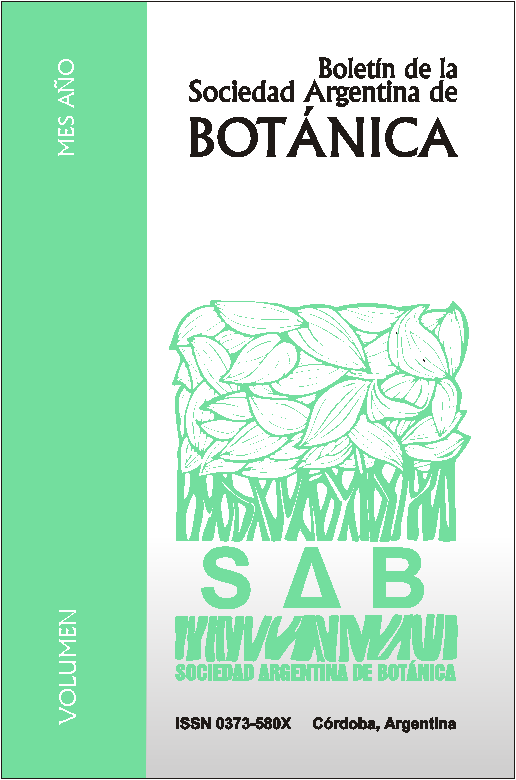Xylariales): Physiological characterization and structural features of its association with wheat.
DOI:
https://doi.org/10.31055/1851.2372.v53.n2.20574Keywords:
Dark septate endophytes, Microdochium bolleyi, root endophytes, wheat cropAbstract
: Plant roots can be colonized by asymptomatic fungal strains belonging to several taxa, among them, the group defined as Dark Septate Endophytes (DSE). Microdochium bolleyi commonly colonizes wheat roots and other crops. It is considered a weak pathogen or even a non-pathogenic fungal species, which has also been considered as a potential biocontrol agent against aggressive soil-borne pathogens in cereal crops. We isolated a strain of M. bolleyi from wheat roots sampled in a crop field in Argentina, and characterized its abilities to grow in different carbon and nitrogen sources, to produce indole and to solubilize phosphorus; also several enzymatic activities were evaluated. In addition, resynthesis was performed under controlled conditions in order to characterize root fungal colonization under both, optical and transmission microscopy. The strain 22-1 colonized wheat root parenchymal tissue, forming chlamysdospores inside parenchymal cells and root hairs, and poorly grew in carbon and nitrogen sources. This fungus also synthesized indoles in in vitro culture, but it cannot solubilize phosphorus. Only amylase activity was detected out of seven enzymatic activity measured. Microdochium bolleyi (strain 22-1) colonized the roots, it formed typical DSE fungal structures and behaved like a “true endophyte”; however further studies are necessary to elucidate its role in the association with wheat.
Downloads
Published
Issue
Section
License
Provides immediate and free OPEN ACCESS to its content under the principle of making research freely available to the public, which fosters a greater exchange of global knowledge, allowing authors to maintain their copyright without restrictions.
Material published in Bol. Soc. Argent. Bot. is distributed under a Creative Commons Attribution-NonCommercial-ShareAlike 4.0 International license.





